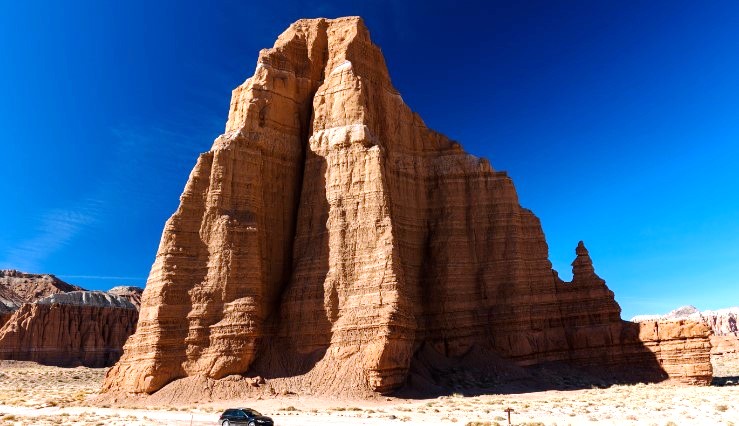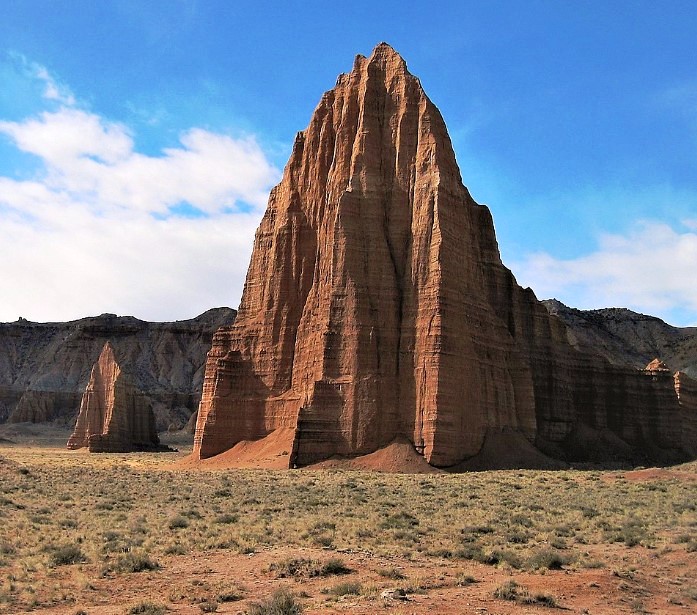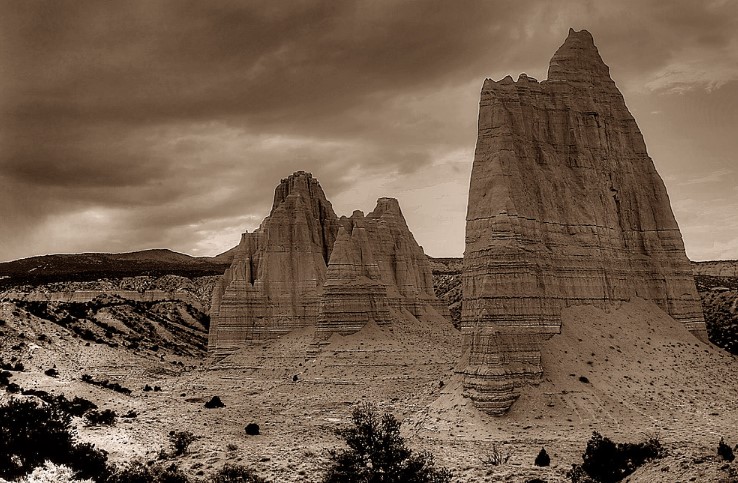The Temple of the Sun is located in Capitol Reef National Park in Wayne County, Utah. The Temple of the Sun is a towering monolith that rises to an elevation of 5,822 feet. A remote and iconic landmark in the North (Cathedral Valley) District of the park, just 0.37 miles from the Temple of the Moon, this landmark is located 12.5 miles north-northeast of the park’s visitor center. During Earth’s history, there was a massive sand sea that formed the sandstone. Approximately 10% of visitors to the park use this popular spot for photography.
In Cathedral Valley, sandstone monoliths resemble Gothic cathedrals with fluted walls, alcoves, and pinnacles. The valley was named in 1945 by Charles Kelly, the first superintendent of Capitol Reef National Monument.
The Temple of the Sun is a monolith that towers over 400 feet above the surrounding terrain, which is part of the Fremont River drainage basin. Entrada Sandstone, the magical sandstone that comprises the Temple of the Sun, was first deposited as sandy mud on tidal flats during the Jurassic period, 165 million years ago.
Three to five degrees of eastward inclination characterize the strata in Cathedral Valley, which appear nearly horizontal. In spite of Capitol Reef being uplifted relatively evenly with the Colorado Plateau, the Water Pocket Fold, a classic monocline, formed between fifty and seventy million years ago during the Laramide Orogeny. Located in a cold, semi-arid climate zone according to the Köppen climate classification system, the Temple of the Sun is best visited in the fall or spring.
There is at least 50% of the total annual rainfall in this region during the spring and summer, with a mean temperature below 32 °F (0 °C) during the coldest month. This desert climate experiences light snowfall in winter due to its annual precipitation of fewer than 10 inches (250 millimeters). In our opinion, there is no designated hiking trail in the valley, but you can wander around and admire it whenever you like.
UT-24 runs along Notom Bullfrog Basin Rd., which is to the northeast of UT-24. Then take a left turn onto N Cathedral Rd., continuing along Cathedral Road/County Road. Make a slight right turn onto Temple of the Moon Road, then turn left.












